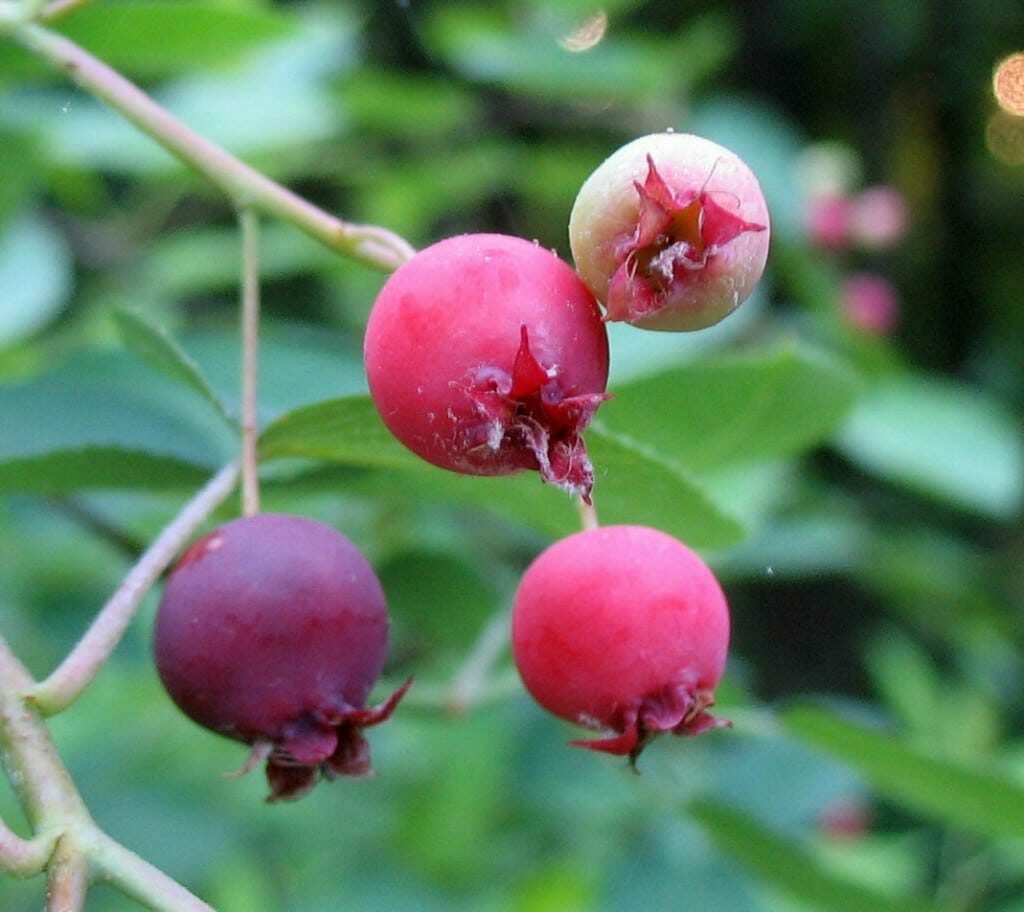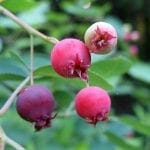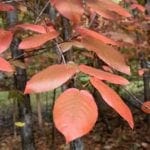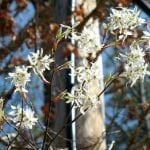- Fruit
- Spring growth
- Fall foliage
- Flowers
The Georgia Native Plant Society is pleased to announce that downy serviceberry (Amelanchier arborea) has been selected as the organization’s 2005 Plant of the Year.
Downy serviceberry is one of the earliest native trees to bloom in early spring. The white flowers appear before the leaves emerge, making the blossoms’ impact all the more dramatic. The inch-wide, five-petaled flowers are borne in elegant, loose clusters from the tips of the tree’s twigs. Butterflies and bees appreciate this bounty of nectar so early in the season.
Though the blooms are at their peak for only a short time, they effectively usher in spring and then yield the show to the unfurling foliage. The simple, elliptical, finely serrated leaves unfold with a downy fuzz on their undersurface, giving them a silvery appearance. They develop into bright green leaves that are 2 to 4 inches long and are a primary larval food source for several butterfly species.
The sweet, fleshy fruits, which are about 1/3 inch in diameter, ripen from red to purple in early summer and are a favored food of many birds and mammals. These fruits were also appreciated by Native Americans and early settlers.
Downy serviceberry is also much appreciated for its fall foliage, which ranges from yellow-gold to orange-red. Even in winter, this tree decorates the landscape with its artistic branching pattern and its smooth gray bark, which is highlighted with vertical, silvery streaks.
In the wild, downy serviceberry is often found in the understory of the forest or at the edge of the woods in partially shaded conditions. However, it is also quite amenable to open, sunny sites in cultivated landscapes. Serviceberry is adaptable to a variety of soils and moisture conditions and is hardy from USDA Zone 4 through 9.
Due to its adaptability, downy serviceberry offers many uses in the landscape. It typically grows only 20 to 30 feet tall, so it is easily incorporated into many landscape applications. It is appropriate as either a specimen tree or naturalized in the landscape, and it is an excellent addition to the wildlife habitat garden. With its white bloom clusters in early spring, downy serviceberry is becoming a popular substitute for the Bradford Pear, which has proved to be a poor landscape specimen due to its weak branch structure.
There are over a dozen species of Amelanchier in North America, and where species overlap in range natural hybrids often occur. Many serviceberry cultivars are available, most of which are hybrids of A. arborea and A. laevis (smooth serviceberry), and they are designated as Amelanchier x grandiflora. These cultivars have been selected for their large flowers or exceptional fall color, and they include ‘Autumn Brilliance’, ‘Autumn Sunset’, ‘Ballerina’, ‘Princess Diana’, and ‘Robin Hill’.
Any disadvantages to the use of serviceberry in the landscape come from it being in the rose family, whose members may be subject to diseases such as fireblight, leaf spot, and rust. Fortunately, most cultivars are resistant to these problems.
Prepared by Mary P. Tucker
Scientific Name:
Common Name:
Scientific Name Pronounciation:
Plant Type:
Tree
Plant Hardiness Zones:
Plant Hardiness Zone(s):
Usual Size:
Flower:
Bloom Time Notes:
Leaf:
Fruit:
Wildlife:
Natural Habitat:
Propagation:
Bloom Time:
Sun or Shade:
Companion Plants:
Cultural Notes:





